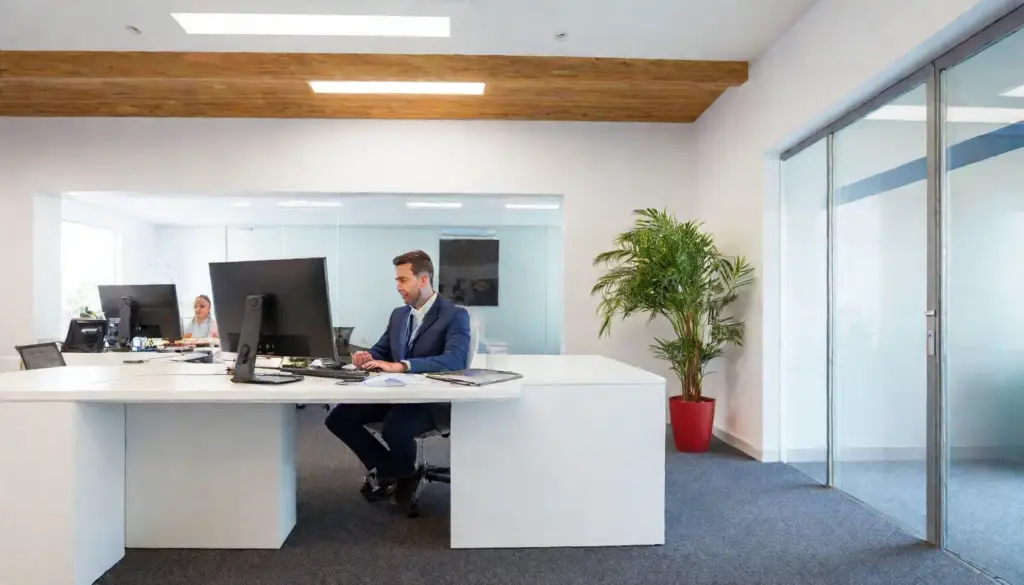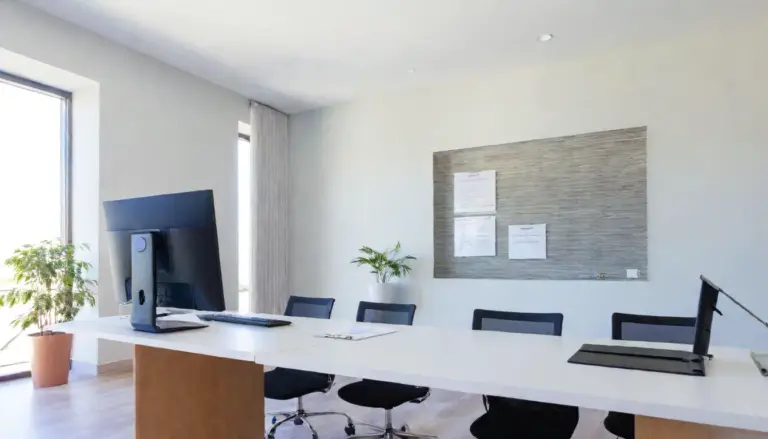As an employee or as a guest, we’ve all experienced the distracting ambiance of a place of business that was either too noisy or too quiet. Many of us work in spaces where we can’t hear ourselves think, or can hear every footstep in the hallway. On the flip side, we’ve all been to an appointment where we overheard everything being said in the next room, or found ourselves uncomfortably whispering at a reception desk in an effort to keep our personal business private.
The good news is there is an effective and cost-efficient solution that is being utilized by a growing number of corporate stakeholders to make their workplace environments more private and pleasing to the ear: sound masking.
Q: What is sound masking?
A: Sound masking is the applied process of installing background or “ambient” sound to reduce noise distractions, protect speech privacy, and increase overall workspace comfort. While it may seem counterintuitive, the adding of sound to a space can actually make the space seem quieter; it just has to be the right kind of sound.
By matching the frequencies of human speech, sound masking is specifically engineered to mask conversations to improve speech privacy and overall space ambience.
Sound masking emits an ambient sound similar to airflow, which is a specifically engineered blend of frequencies that reduces the intelligibility of human speech and masks room noises. Unlike white noise, which works via amplification, sound masking creates a pleasant, uniform, low-frequency sound at a consistent volume and level so that the “hum” of the masking system blends unnoticeably into the background.
Q: What makes sound masking so effective?
A: Sound masking systems work by decreasing how far away conversations can be overheard and understood. The technology doesn’t cancel sound or eliminate speech noise, it simply reduces what is determined to be the radius of distraction — how far away conversations within the environment can be heard and understood by others.
For example, a conversation between two people that can be clearly overheard 50+ feet from the source can be minimized through sound masking to a radius of 12-15 feet. The pair carrying on the conversation can hear each other clearly, but to those outside of the smaller radius of distraction, their words become muffled and far less intelligible so that close conversations can be more private.
In terms of efficacy, sound masking has been shown to reduce employee stress by as much as 27 percent. By dampening the distraction of their coworkers’ conversations, the copy machine, and other sounds, employees benefit from a more peaceful work environment. Furthermore, sound masking can boost productivity by up to 20 percent.
Q: Where is sound masking being utilized?
A: Typically, sound masking solutions are recommended for a business environment where speech privacy and noise disruptions are a major concern. These include:
Open Office Spaces
Due to lack of walls and doors in an open office floor plan, the workspace is either too quiet, where every little sound is amplified, or too noisy, the result of having multiple people working and conducting conversations all at once.
Private Offices
In many business’ buildings, the walls are thin and only extend to the ceiling tiles — not the actual ceiling deck — so that sound carries through the hallways and conversations are overheard between adjacent offices.
Common Areas
In waiting rooms, reception areas, or at customer service centers, it becomes a matter of privacy and professional courtesy for patients and customers to feel that their personal business isn’t being overheard by those around them.
Sound masking is being utilized in financial institutions; pharmacies; libraries; large corporations; hotels; hospitals and healthcare practices; government and military facilities; private office buildings; and wherever else speech privacy is a major concern.
Q: What does a sound masking installation require?
A: Sound masking is a job for experienced technicians and typically requires a detailed installation plan that considers many factors. Not just the size, shape, acoustics, and sound challenges of the office space but every light fixture, wall, and even the material of your ceiling affect the overall scheme of your installation.
There are many manufacturers offering a variety of sound masking solutions. The most common installations are direct-field systems that are comprised of a series of sound masking speakers (emitters), amplifiers, equalizers, sensors, and controllers. Speakers are installed in a grid pattern in the ceiling and are connected to a central controller where the volume and duration can be set and adapted. There are also smart sound masking systems that identify variations in ambient noise and make real time adaptive adjustments to the masking volume during very active or quiet times in the workday.
Ready to create a more private, comfortable, and productive work environment?
Consulting with a trusted technology provider like Teksetra is a smart strategy for getting your sound masking installation moving in the right direction. Our team of experienced AV specialists can help you determine your needs, and we have the vendor relationships in place to facilitate a sound masking solution to suit your workplace acoustical needs. How easy does that sound?
Learn more about our sound masking solution here, or find out how we can help by calling 1-888-287-4186 or emailing [email protected].






